How do death saves work in D&D? Death saving throws are a crucial mechanic in Dungeons & Dragons 5th Edition that determines whether a character clings to life or succumbs to their wounds; savewhere.net explains this system in detail, offering clear strategies for players and DMs alike. Understanding the nuances of death saves can transform tense moments into epic tales of survival, making your D&D experience even more thrilling.
1. Understanding Hit Points and Falling Unconscious
Every character and creature in D&D has hit points (HP), representing their ability to withstand damage. The closer a creature gets to zero hit points, the nearer they are to death.
What Happens When You Reach Zero Hit Points?
Reaching zero hit points triggers one of two scenarios, depending on the amount of damage sustained. Massive damage and unconsciousness.
Massive Damage
If the damage that reduces you to zero HP exceeds your hit point maximum, you suffer massive damage and die instantly. There are no death saves allowed.
For instance, if your hit point maximum is 30, and you take 65 points of damage from a single attack, you die immediately.
Unconsciousness
If the damage is less than your maximum HP, you fall unconscious and start making death saving throws. An unconscious character is prone, can’t take actions, and drops whatever they’re holding. Attacks against them are critical hits.
 A player character dying at a masquerade ball in Dungeons & Dragons
A player character dying at a masquerade ball in Dungeons & Dragons
2. Death Saving Throws Explained
When a character is reduced to zero hit points but doesn’t take massive damage, they must make death saving throws at the start of their turn.
What is a Death Saving Throw?
A death saving throw is a special saving throw made when a character starts their turn at zero hit points. It’s not tied to any ability score, making it purely a game of chance. However, spells and abilities that grant advantage on saving throws can improve your odds.
How to Make a Death Saving Throw
To make a death saving throw, roll a twenty-sided die (d20). Here’s how the roll determines your fate:
- 10 or Higher: Success
- 9 or Lower: Failure
Mark down successes and failures. Accumulating three successes stabilizes you, while three failures results in death.
If someone attacks you while you’re making death saves, mark off an additional failure. A critical hit counts as two failures.
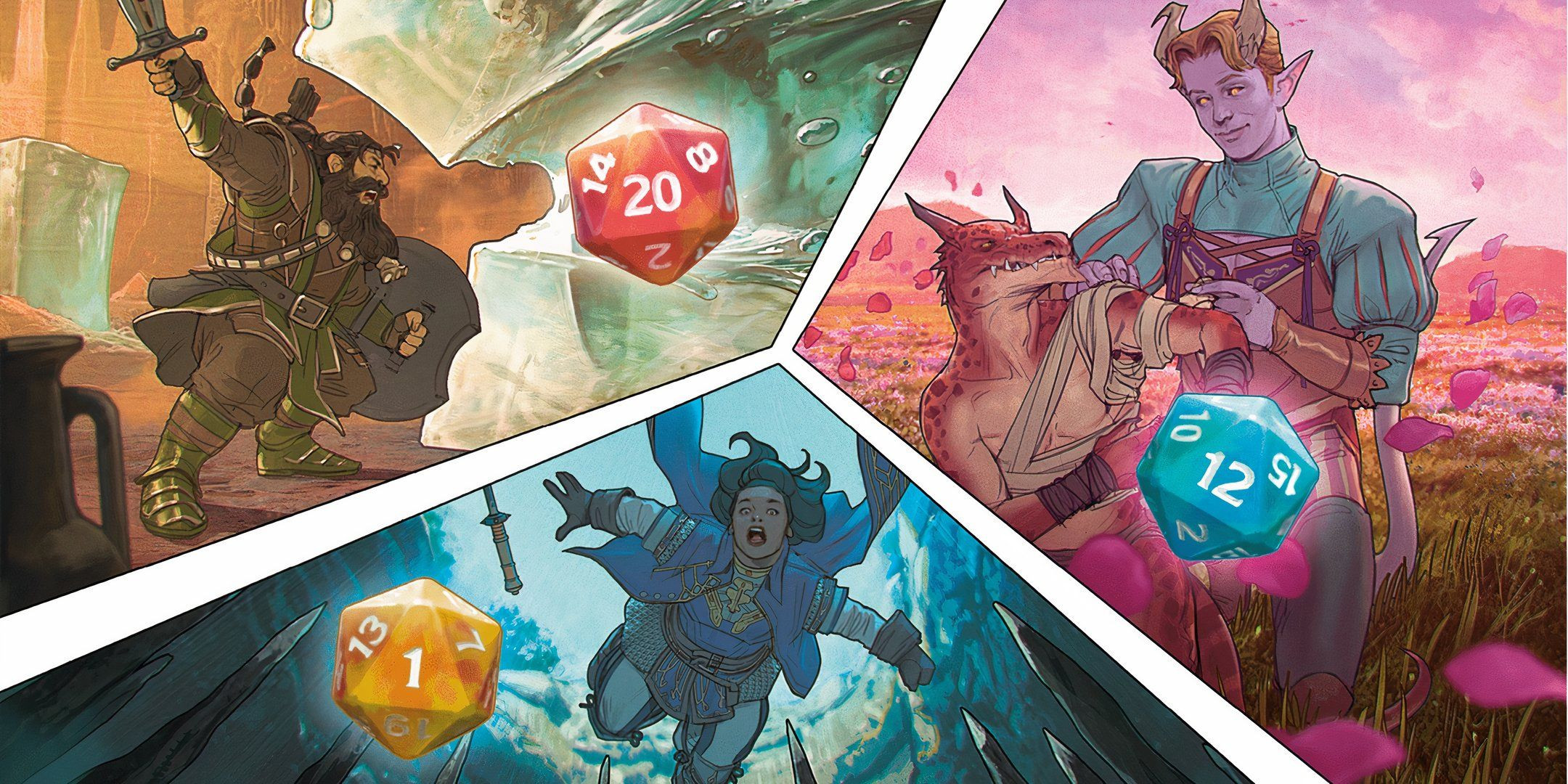 An image showing various dice rolls from a 1 to a 20 in Dungeons & Dragons
An image showing various dice rolls from a 1 to a 20 in Dungeons & Dragons
Consequences of Each Roll
Here’s a breakdown of the effects of each roll on the d20:
| Roll on the D20 | Effect |
|---|---|
| 1 | Mark off two failures. |
| 2-9 | Mark off one failure. |
| 10-19 | Mark off one success. |
| 20 | Instantly gain one HP and wake up. |
Success: Becoming Stable
If you succeed at three death saving throws, you become stable. A stable character is no longer in danger of dying and remains unconscious for 1d4 hours, after which they wake up with 1 hit point. If you take any damage while unconscious, you must start making death saving throws again.
Failure: Character Death
If you fail three death saving throws, your character dies. The optional Meat Grinder Mode from Tomb of Annihilation increases the difficulty by setting the DC for death saving throws to 15, making it harder to succeed.
3. Do Monsters Make Death Saving Throws?
Generally, monsters do not make death saving throws; they die when reduced to zero hit points. However, when attacking a monster, you can choose to reduce it to one hit point and knock it unconscious instead of killing it. This decision must be declared in advance.
The DM may allow powerful villains or story-important NPCs to make death saving throws, following the same rules as player characters.
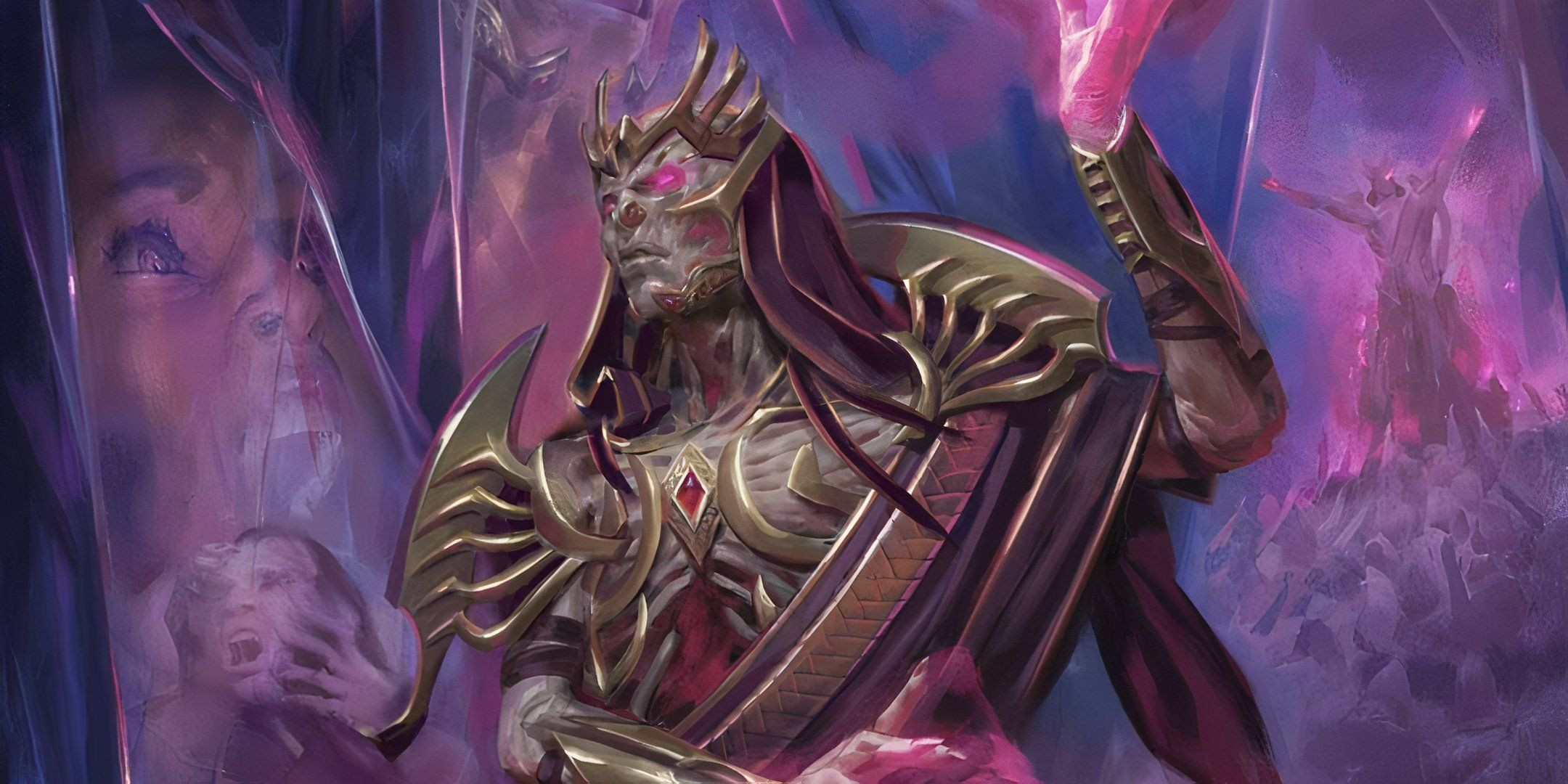 The Archlich Vecna in full armor with glowing purple eyes in Dungeons & Dragons
The Archlich Vecna in full armor with glowing purple eyes in Dungeons & Dragons
4. Ways to Help a Dying Character
If a character is making death saving throws, their allies can assist them in several ways.
Magical Healing
The easiest way to help a dying character is to heal them magically. Spells like Cure Wounds or administering a healing potion as a bonus action will bring them back from the brink. Any amount of magical healing gets a character back on their feet, negating the need for death saves.
Stabilizing
If magical healing isn’t available, you can attempt to stabilize the dying character. To do so, you must be within melee distance and use the Help action to make a Medicine check. If you roll 10 or higher, the character becomes stable and stops making death saving throws. A Healer’s Kit can stabilize a character without requiring a roll. The Spare the Dying spell can also stabilize a character.
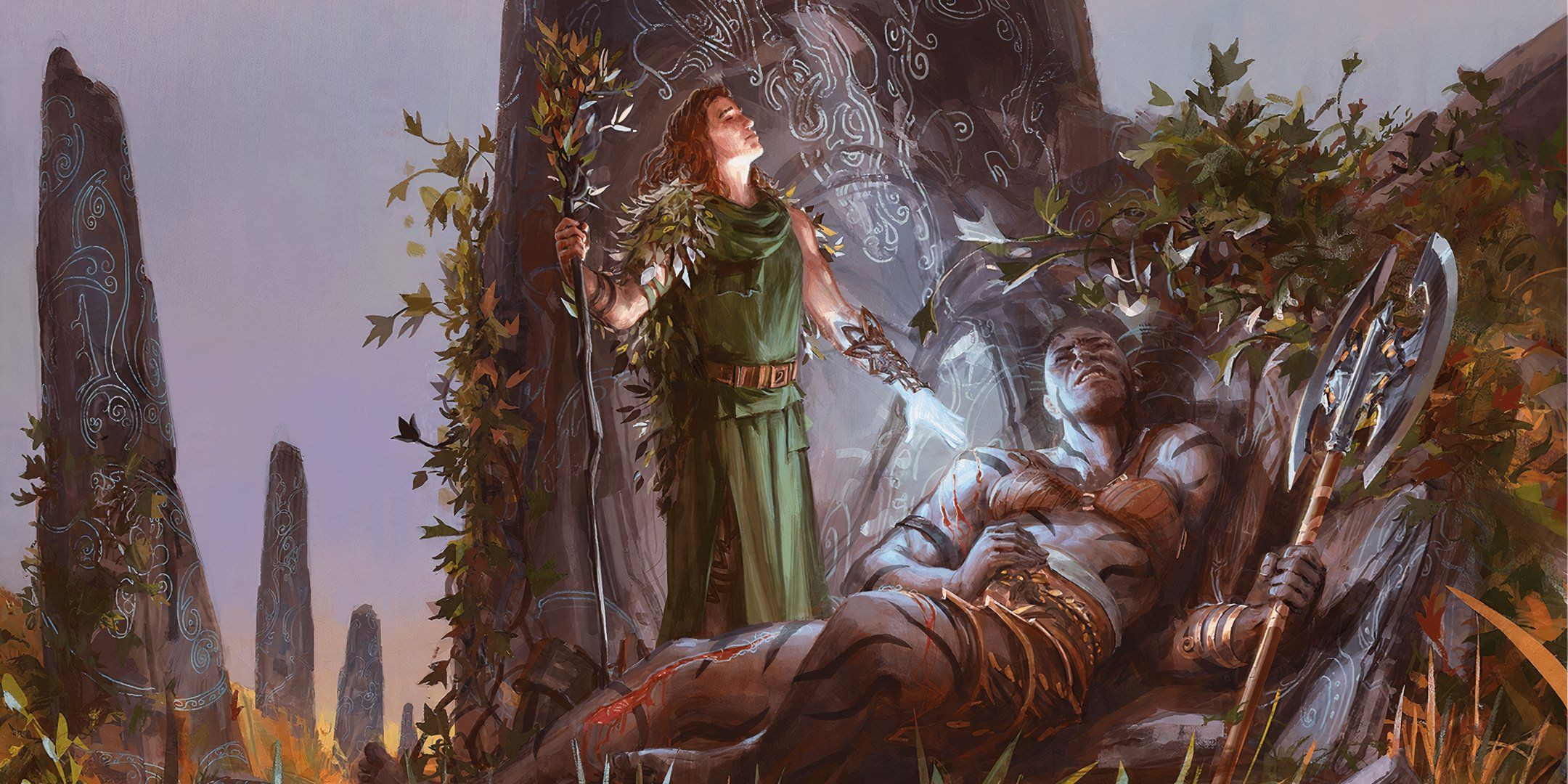 A druid in green robes casting lesser restoration on a fallen warrior in Dungeons & Dragons
A druid in green robes casting lesser restoration on a fallen warrior in Dungeons & Dragons
5. What Happens After a Character Dies?
A character who has died cannot be healed, cannot move, or take actions, and is effectively out of the game unless magic is used to bring them back.
DM’s Role
The DM decides how to handle character death. Some DMs may actively try to challenge players and make resurrection difficult, while others may prefer to make it easier for characters to return.
Discuss the DM’s approach during character creation to plan accordingly. This is often covered during a Session Zero.
Options After Death
Once a character dies, the primary options are to bring them back through magic or create a new character.
6. Resurrecting a Character
To bring back a dead character, use a necromancy spell such as Revivify, Raise Dead, Resurrection, or True Resurrection.
Challenges of Resurrection
Resurrection spells are difficult, expensive, and often have lingering side effects. Some campaign settings may restrict resurrection magic.
Most of these spells require a diamond worth at least 500 gp, which the spell consumes. They also often require that the character has been dead for less than a certain amount of time.
Penalties for Resurrection
Many resurrection spells impose penalties on the caster and the target. For example, some resurrected characters may take a -4 penalty to nearly every roll until they’ve completed four long rests. Other spells, like Resurrection, incur a penalty to the caster, such as preventing spellcasting until after a long rest if the target has been dead for more than a year.
7. Spells That Aid Dying or Dead Characters
Various spells and magical effects can aid dying characters or bring them back to life.
List of Helpful Spells
| Spell | Level | Classes | Effect |
|---|---|---|---|
| Spare the Dying | Cantrip | Artificer, Cleric, Divine Soul Sorcerer, Undying Warlock | Living creature with 0 hp becomes stable. |
| Gentle Repose | 2 | Cleric, Wizard | Dead creature can’t become undead and extends the time limit on raising the target from the dead by ten days. |
| Revivify | 3 | Artificer, Cleric, Paladin, Wildfire Druid, Witherbloom Druid, Divine Soul Sorcerer, Celestial Warlock, Witherbloom Warlock | Creature that died within the last minute returns to life with 1 hp. |
| Raise Dead | 5 | Bard, Cleric, Paladin, Alchemist Artificer, Divine Soul Sorcerer, Wildfire Druid | Creature that died within the last 10 days returns to life with 1 hp. |
| Reincarnate | 5 | Druid | Creature that died within the last 10 days returns to life in a new body. |
| Resurrection | 7 | Bard, Cleric, Divine Soul Sorcerer | Creature that died within the last 100 years returns to life with full HP, all injuries healed. |
| Clone | 8 | Wizard, Arcana Cleric | Creates an inert physical clone of a creature; upon death, the creature’s soul moves to the clone body. |
| True Resurrection | 9 | Cleric, Druid, Divine Soul Sorcerer | Creature that died within the last 200 years returns to life with full HP, all injuries and curses healed, can provide a new body if the original no longer exists. |
| Wish | 9 | Sorcerer, Wizard, Arcana Cleric, Genie Warlock | Reshape reality. You can undo a single recent event, forcing a reroll… including a friend’s failed death saving throw. |
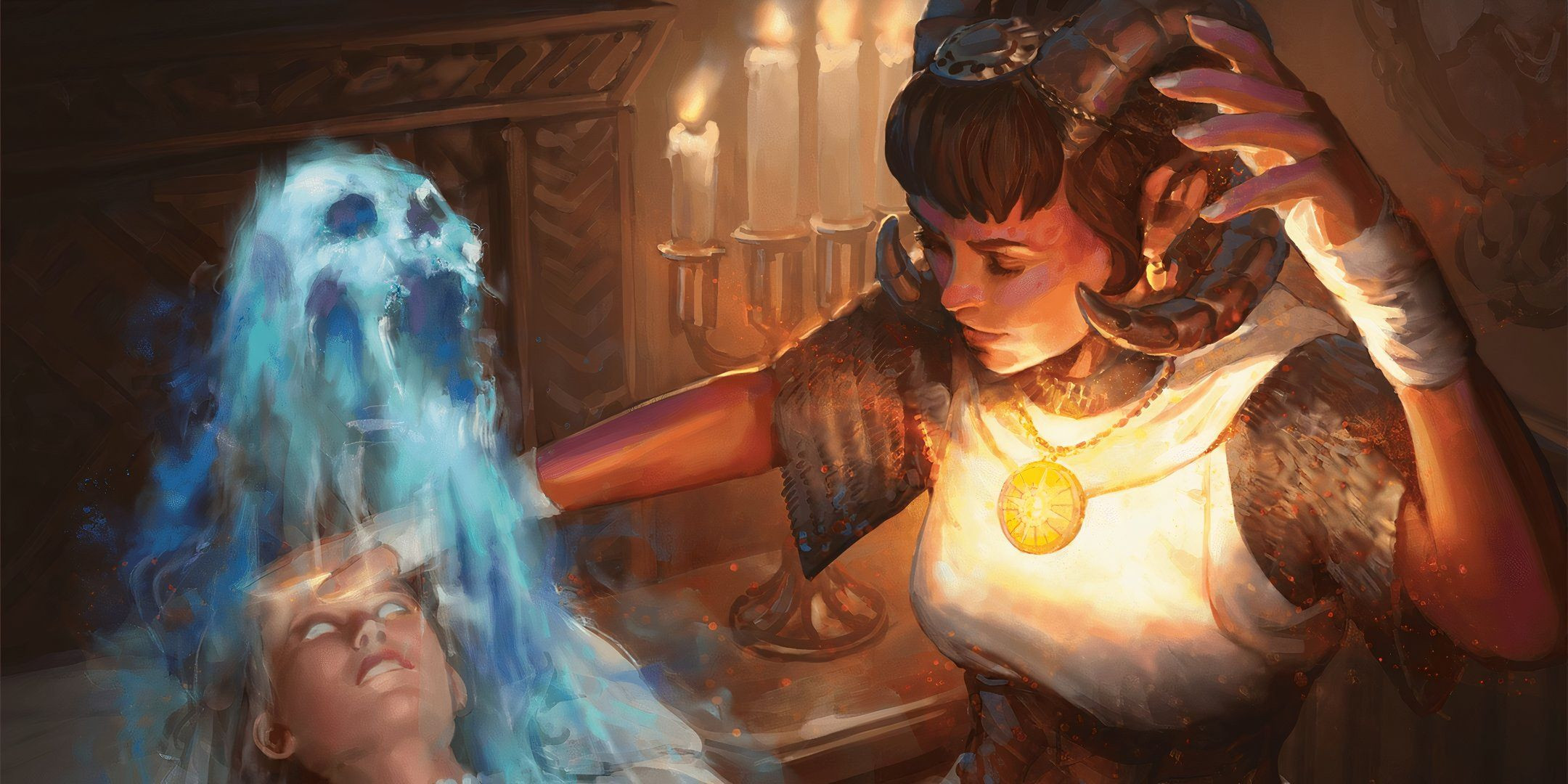 A magic user calls forth a magical skull using necromantic magic in Dungeons & Dragons
A magic user calls forth a magical skull using necromantic magic in Dungeons & Dragons
8. Creating a New Character
If resurrection isn’t possible or desired, you can create a new character.
Consult Your DM
Talk to your DM about their preferences for new characters. Some campaigns may have house rules about creating new characters after a death.
Some DMs may allow you to create a character at the same level as the rest of the party, while others may require you to start at first level. Some DMs may discourage new characters altogether if the story focuses on specific heroes.
Character Integration
Consider how the new character might connect to the previous one. They could be a former ally, a family member seeking revenge, or even an NPC from an earlier part of the campaign.
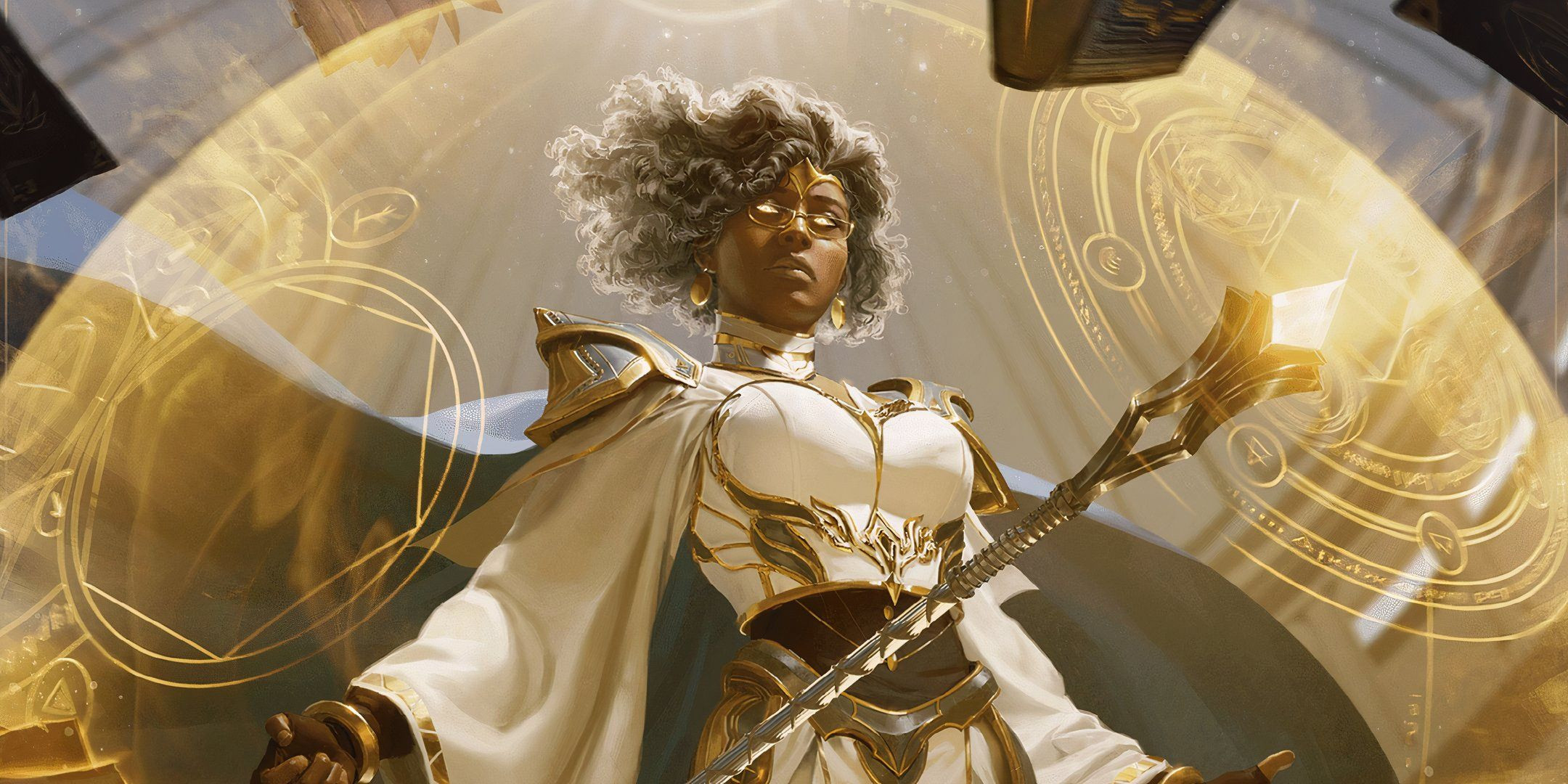 A wizard with glowing eyes and a mystical staff and gray hair floats in Dungeon & Dragons
A wizard with glowing eyes and a mystical staff and gray hair floats in Dungeon & Dragons
9. Strategic Financial Planning for D&D Adventures
Embarking on a D&D campaign isn’t just about slaying dragons and saving kingdoms; it’s also a fantastic opportunity to apply real-world financial planning skills. Here’s how you can connect the thrill of D&D with the principles of smart money management:
Treasure as Income: Budgeting Like a Pro
In D&D, treasure represents your income. Efficiently managing this income can mirror real-life budgeting strategies.
- Allocate Wisely: Just as in personal finance, allocate your treasure for essentials like healing potions (healthcare), equipment upgrades (investments), and spell components (education).
- Track Expenses: Keep a log of how your treasure is spent. This practice mirrors tracking your expenses, helping you understand where your resources are going.
- Plan for the Future: Save a portion of your treasure for future needs, such as commissioning a powerful magic item or contributing to a local community.
Equipment as Investments: Diversify Your Portfolio
Your character’s equipment is akin to an investment portfolio, where diversifying your gear can enhance your capabilities.
- Invest in Versatility: Acquire items that offer multiple benefits, such as a Bag of Holding for logistical efficiency or a Ring of Protection for defense.
- Assess Value: Before purchasing, assess the item’s long-term value. Will it remain useful at higher levels? Does it synergize with your character’s abilities?
- Avoid Overspending: Resist the urge to splurge on flashy but impractical items. Prioritize functionality and strategic advantage.
Quests as Financial Goals: Set Clear Objectives
Each quest is a financial goal, complete with challenges and rewards. Setting clear objectives can improve your party’s success rate and financial stability.
- Negotiate Rewards: Before accepting a quest, negotiate for better compensation. This mirrors negotiating salaries or contract terms in the real world.
- Analyze Risks: Evaluate the risks associated with each quest. High-risk, high-reward quests may be tempting, but ensure your party is adequately prepared.
- Celebrate Successes: After completing a quest, acknowledge and celebrate your achievements. This reinforces positive financial habits and boosts morale.
Downtime Activities as Side Hustles: Generate Additional Income
Downtime activities, such as crafting, performing, or running a business, offer opportunities to generate additional income.
- Develop Skills: Invest in skills that can yield financial returns. For example, a character proficient in herbalism can create and sell potions.
- Market Your Talents: Promote your services to potential clients. Word-of-mouth and reputation can significantly impact your earnings.
- Manage Resources: Efficiently manage your resources and time to maximize profits. This mirrors the entrepreneurial skills needed to run a successful side hustle.
By integrating these financial planning strategies into your D&D adventures, you’ll not only enhance your gameplay but also develop valuable real-world skills.
10. How Savewhere.net Can Enhance Your Financial Strategy
Savewhere.net provides a wealth of resources to help you make informed financial decisions. By understanding and applying these tips, you can improve your financial well-being and achieve your financial goals.
Budgeting Tools
Savewhere.net offers budgeting tools that help you track your spending and manage your money effectively. By using these tools, you can identify areas where you can cut back and save more. According to the U.S. Bureau of Economic Analysis (BEA), effective budgeting is crucial for financial stability.
Savings Tips
Savewhere.net provides various savings tips that can help you save money on everyday expenses. From finding discounts to making smart purchasing decisions, these tips can significantly increase your savings. Research from the Consumer Financial Protection Bureau (CFPB) shows that small changes in spending habits can lead to substantial savings over time.
Investment Advice
Savewhere.net offers investment advice to help you grow your wealth. Whether you are a beginner or an experienced investor, you can find valuable information on how to invest your money wisely. According to financial experts, investing is essential for achieving long-term financial goals.
Community Support
Savewhere.net has a supportive community where you can connect with other individuals who are also working towards financial independence. By sharing tips and experiences, you can learn from others and stay motivated on your financial journey.
Death saving throws add drama and tension to D&D, while offering a chance for characters to survive seemingly fatal blows. Understanding the rules and strategies around death saves can enhance your gaming experience, creating memorable moments and epic tales.
Ready to master your finances and embark on your own adventure towards financial freedom? Visit savewhere.net today to discover more ways to save, invest, and achieve your financial goals. Join our community of savvy savers and take control of your financial future. Your quest for financial independence starts here!
Frequently Asked Questions (FAQ)
1. What happens if I roll a 1 on a death saving throw?
If you roll a 1 on a death saving throw, it counts as two failures instead of one, bringing you closer to death.
2. Can I use inspiration on a death saving throw?
Yes, you can use inspiration to reroll a death saving throw, potentially turning a failure into a success.
3. Does armor class affect death saving throws?
No, armor class does not affect death saving throws. Death saving throws are purely based on the d20 roll.
4. Can I heal myself while making death saving throws?
Yes, if you have a way to administer a healing potion or cast a healing spell on yourself, you can do so while making death saving throws.
5. What is the difference between being stable and being healed?
Being stable means you are no longer in immediate danger of dying but remain unconscious. Being healed means you regain hit points and are no longer unconscious.
6. Can an enemy coup de grace a character making death saving throws?
The DM determines whether an enemy can coup de grace a character making death saving throws. Generally, it is allowed, resulting in immediate death.
7. Does the Spare the Dying cantrip prevent death saving throws?
Yes, the Spare the Dying cantrip stabilizes a creature with 0 hit points, preventing the need for death saving throws.
8. What happens if I am stabilized and then take damage?
If you are stabilized and then take damage, you must start making death saving throws again.
9. Can I use a healing potion on another character as a bonus action?
Yes, you can use a bonus action to administer a healing potion to another character, bringing them back from the brink of death.
10. How long does a character remain unconscious after being stabilized?
A character remains unconscious for 1d4 hours after being stabilized, after which they wake up with 1 hit point.
